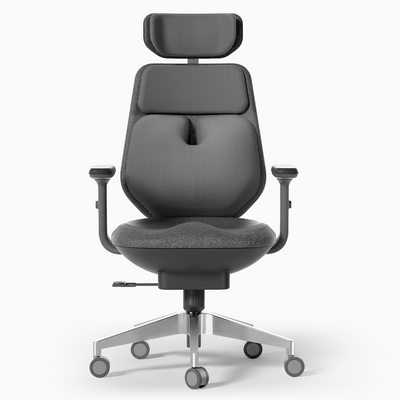
Difference Between Pilates and Yoga: Which Workout Has More Benefits?
We all know that working out is good for you, but it's also important to find the right type of exercise routine for your body and lifestyle so you stick with it.
Pilates and Yoga are both great workout routines. Both of these exercises have their benefits for your body. But there are a few differences between them that you should know about before deciding if one or the other is right for you.
In this article, we will explain the difference between Pilates and Yoga so you can decide which one is best for you.
What is Pilates?

Pilates is an exercise routine that focuses on developing your body's core. It is great for people who need to be targeted toning in their midsection, lower back pain relief, or want to improve their posture.
You can perform Pilates with or without equipment. It uses a mat and equipment such as springs, resistance bands, and the reformer to tone muscles and build flexibility.
Pilates is relatively new to the exercise scene, having only been developed in the early 1900s by Joseph Pilates. He created his own equipment to perform specific exercises that he designed for wounded World War I soldiers.
Pilates has become very popular over the past few years because of its effectiveness in toning muscles and improving flexibility.
Benefits of Pilates
There are many benefits to Pilates. It is a great workout for targeting your core, which helps you have better balance in everyday activities. Many people do Pilates because it helps them improve their posture by strengthening the back and shoulders.
Core Control
Pilates is great for training your core muscles, which are the foundation of every movement in your body. You use these muscles even when you do something simple like standing up from a chair. Pilates ensures that these important muscles are working correctly so you can have better balance and a stronger back.
Better Posture
Pilates also focuses on your posture. It keeps your back strong and flexible, preventing problems like arthritis or lower back pain.
Strength Training
Pilates tones muscles without bulkiness. You will develop lean muscle mass with Pilates which is much healthier for you than bulking up by lifting weights.
Increased Flexibility
Pilates increases the range of motion in your joints which can help prevent injuries. It also increases your flexibility because it keeps the muscles surrounding the joints flexible and lubricated with synovial fluid.
Rehabilitation
Pilates is great for rehabilitating injuries. It can help people recover from illnesses, surgeries, and sports injuries. Pilates focuses on moving the body with proper form so you are not just exercising your muscles, but training them to work together correctly.
Safe Mobility
Pilates focuses on active and passive stretching, which promotes greater mobility and flexibility in the joints. It also includes low-impact strengthening exercises to keep your joints safe.
What is Yoga?

Yoga is a traditional Indian physical, mental, and spiritual practice or discipline. It includes postures (asanas), breathing exercises (pranayama), and meditation.
Yoga has become very popular in the United States over the past few years as people discover its many benefits for your mind and body. It involves stretching and moving your body into different poses. It keeps your mind focused on your movements and breathing as you stretch and strengthen muscles.
Yoga is great for people who need to improve their balance, flexibility, or want a spiritual boost in their life.
Benefits of Yoga
Yoga has many benefits that Pilates does not offer. These are some of the most common reasons people try yoga.
Improved Flexibility
Yoga is great for improving your flexibility. The combination of poses and breathing exercises increases your body awareness and range of motion, which will help you feel less stiff and more limber.
Stress Relief
Doing yoga has been proven to relieve stress by calming the mind, which promotes a better mood and greater focus throughout the day. Yoga also increases serotonin, your body's natural happy drug.
Increased Energy
Doing yoga in the morning can boost your energy levels all day. It helps your metabolism and blood circulation so you have more energy to burn throughout the day.
Enhanced Memory
The breathing exercises in yoga help improve memory by keeping oxygen flowing through the brain which brings more nutrients and oxygen to the brain.
Better Sleep
Yoga helps promote better sleep by relaxing your mind and body before you go to bed. Yoga is also a great workout, so it can help you fall asleep faster because you are more tired after the workout.
Disease Prevention
Researchers have discovered that regular Yoga practice can help to reduce asthma symptoms and lower the risk of heart disease. It also helps improve the overall health of the practitioner (also known as Yogi.)
Similarities Between Pilates and Yoga
There is a lot of crossover in the two practices because Pilates was influenced by yoga and meditation. Their similarities include:
Focus on Mind and Body Connection
Both methods focus on getting you to concentrate and be aware of your body as you move and stretch into different positions.
Can be Done with Little Equipment
With only a few pieces of equipment, yoga and mat Pilates are both feasible. They just require a mat and any additional props like a block or a Pilates ring, if applicable.
Great for the "Everyday Person"
They are both low impact and easy on your body, which makes them great for people of all ages and fitness levels.
Improved Posture and Stability
Pilates and yoga both help improve your posture by focusing on proper movement patterns, which also promotes better balance and stability.
Difference Between Pilates and Yoga
While both Pilates and Yoga share some similarities, there are also some significant differences between the two.
Focus on Core Strength
Pilates is known for its focus on the core. The "powerhouse" muscles of your hips and abdomen are the main focus in Pilates to provide you with a strong center, better balance, and stability.
On the other hand, Yoga doesn't center the focus around any specific body area.
Focus on Breathing
Yoga often includes holding poses for multiple breaths, while in Pilates classes students will continue working (except during cool-down stretching) to keep their muscles energized.
Breathing in Yoga is used for relaxation whereas Pilates uses breathwork to energize the muscles. This keeps you moving around constantly instead of staying stationary and alleviate your heart rate.
Types of Equipment Used
Pilates makes use of equipment like the Pilates ring, springboard, and even exercise balls to work your body into different positions. This equipment help improves balance, flexibility, stability, and strength.
You can also use Pilates reformer - a piece of advanced Pilates equipment to transform your core strength and flexibility. You are strapped into the machine and attached to springs while working through different exercises designed to target specific muscle groups.
If you need help choosing the best Pilates reformer for your home, check out our ultimate buying guide.
Yoga does not utilize any specific type of equipment, instead, you will use yoga blocks, straps, bolsters, or chairs as aids for certain poses. These props improve balance, flexibility, and strength in the body.
Session Duration
Pilates sessions last upwards of an hour, but most average at 45 minutes.
Yoga sessions are usually about 90 minutes, but standard classes generally take place over three days a week to allow for longer session times.
We've already discussed the ideal Pilates schedule so make sure to check that out!
Size of Community
Yoga is a large community with hundreds of thousands of people practicing yoga all over the world. Pilates has a smaller community, but its numbers are growing due to better understanding and acceptance of Pilates in the United States.
Final Words
As you can see, the difference between Yoga and Pilates isn't much but it's important to know what both have to offer and what they focus on. Now that you've read about the difference between Pilates and Yoga, you should feel confident in being able to decide which is best for you.
« Back to Pilates Blog







